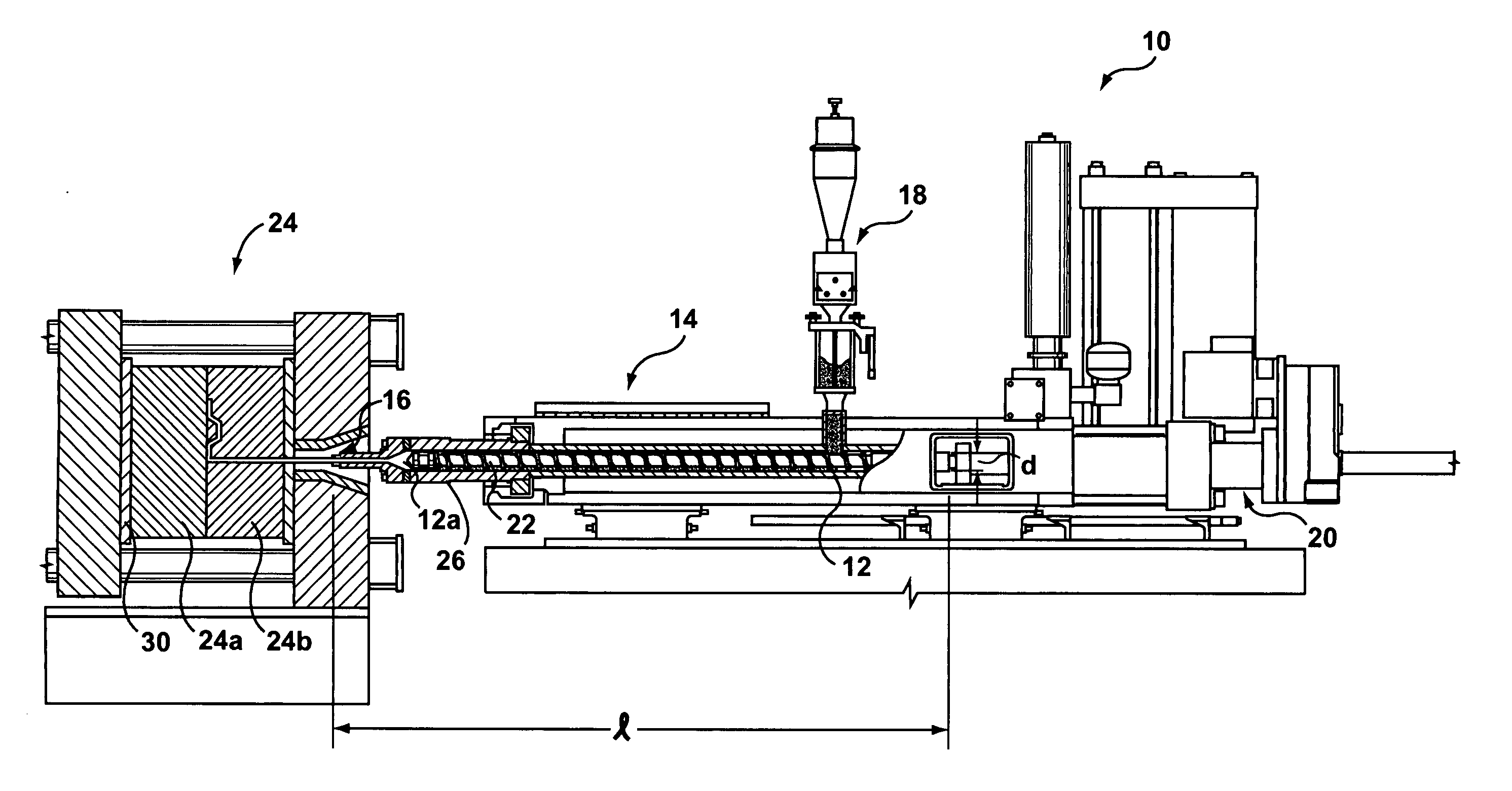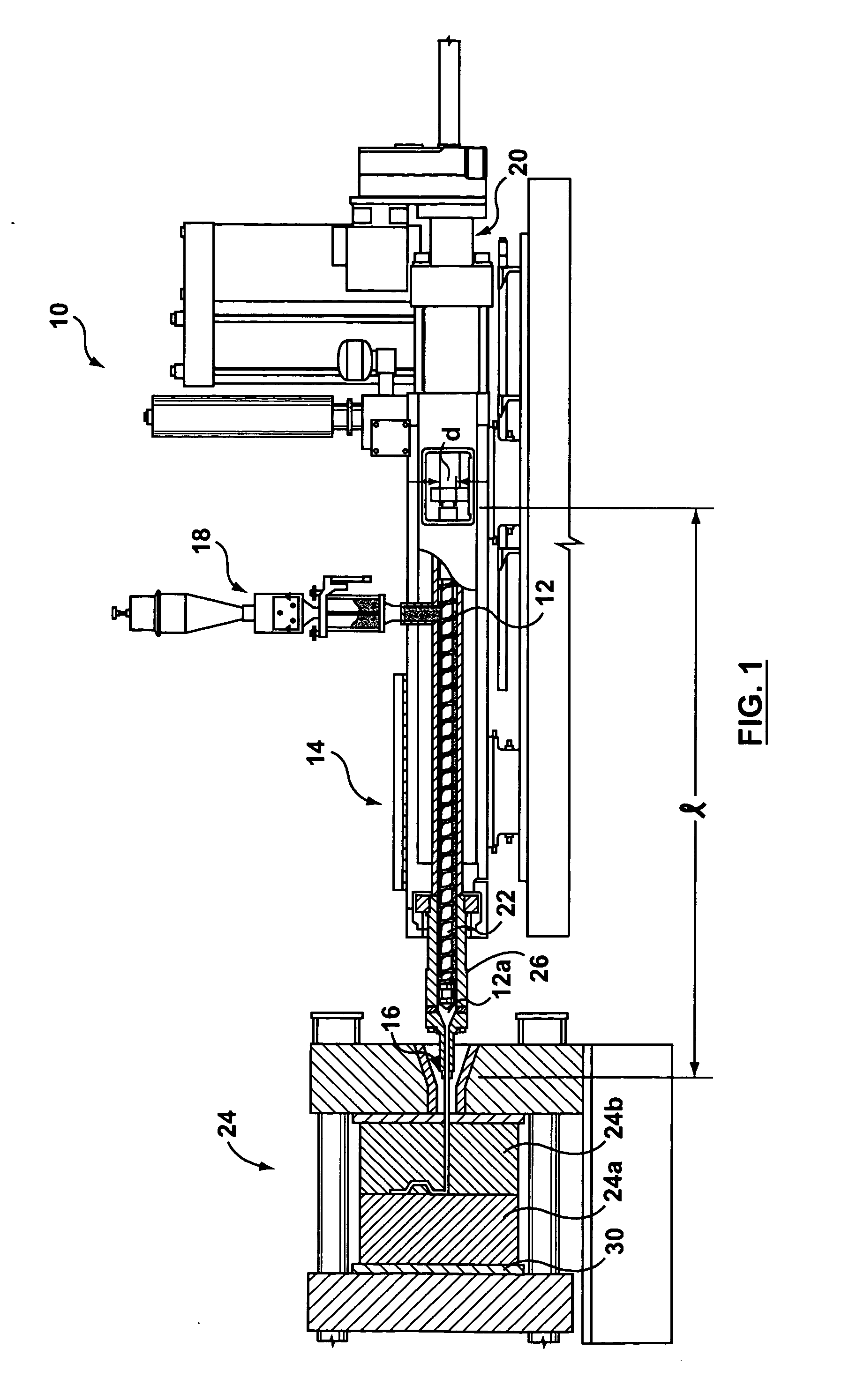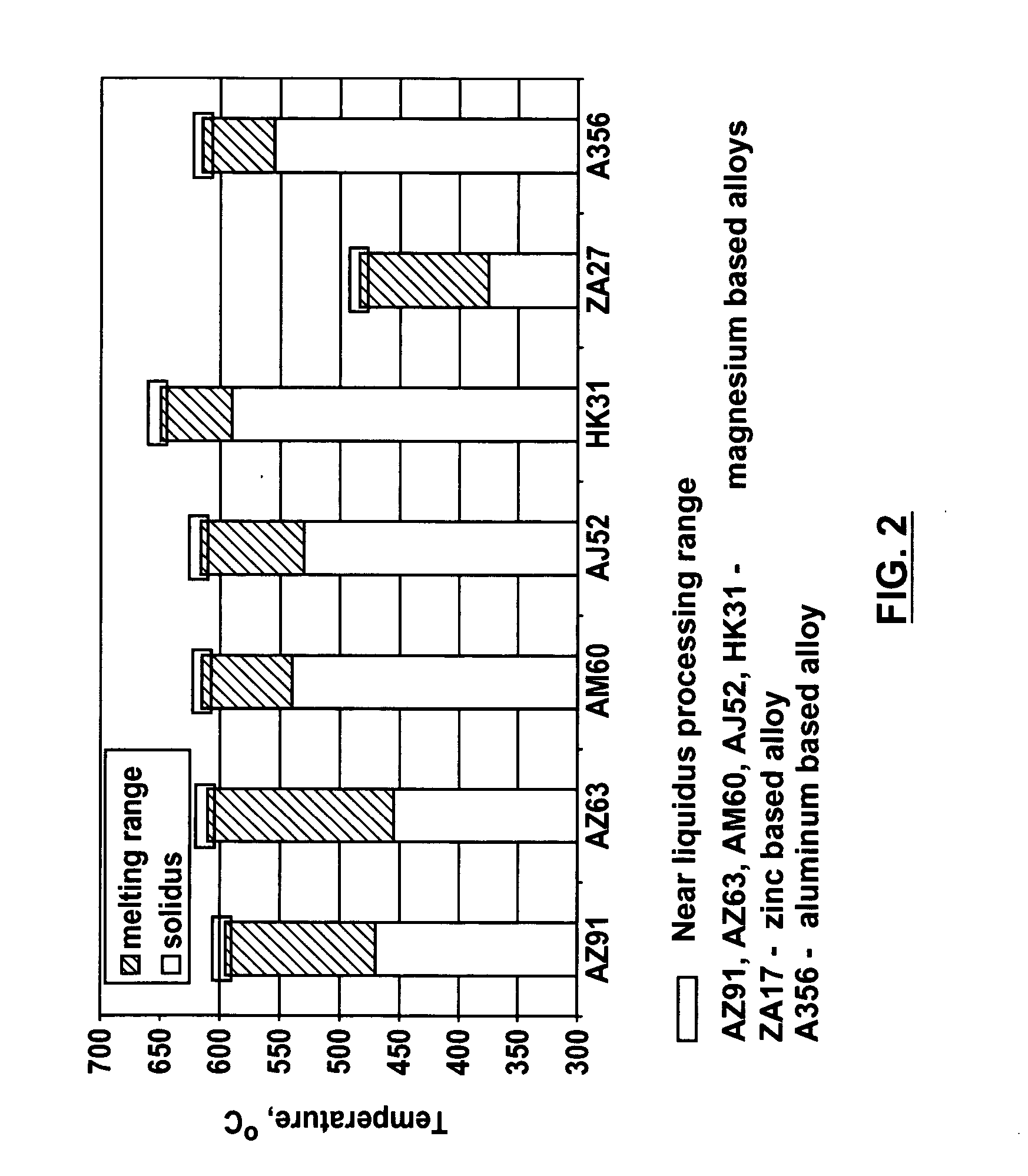Near liquidus injection molding process
- Summary
- Abstract
- Description
- Claims
- Application Information
AI Technical Summary
Benefits of technology
Problems solved by technology
Method used
Image
Examples
Embodiment Construction
[0061]FIG. 1 schematically shows an injection-molding apparatus 10 used to perform the process according to the present invention. The apparatus 10 includes a barrel assembly comprising a cylindrical barrel portion 12 with a barrel head portion 12a arranged at a distal end thereof, and a machine nozzle portion 16 opposite thereto, a contiguous melt passageway being arranged through said barrel assembly. The barrel portion 12 is configured with a diameter d of 70 mm and a length l of approximately 2 m. A temperature profile along the barrel assembly is maintained by electrical resistance heaters 14 grouped into independently controlled zones along the barrel portion 12, including along the barrel head portion 12a and the nozzle portion 16. According to a preferred embodiment, the apparatus 10 is a Husky™ TXM500-M70 system whereby the temperature of the alloy in the head portion 12a may be controlled within 2° C. of the liquidus temperature and even within 1° C. thereof.
[0062] Solid ...
PUM
| Property | Measurement | Unit |
|---|---|---|
| Temperature | aaaaa | aaaaa |
| Temperature | aaaaa | aaaaa |
| Temperature | aaaaa | aaaaa |
Abstract
Description
Claims
Application Information
 Login to View More
Login to View More - R&D
- Intellectual Property
- Life Sciences
- Materials
- Tech Scout
- Unparalleled Data Quality
- Higher Quality Content
- 60% Fewer Hallucinations
Browse by: Latest US Patents, China's latest patents, Technical Efficacy Thesaurus, Application Domain, Technology Topic, Popular Technical Reports.
© 2025 PatSnap. All rights reserved.Legal|Privacy policy|Modern Slavery Act Transparency Statement|Sitemap|About US| Contact US: help@patsnap.com



